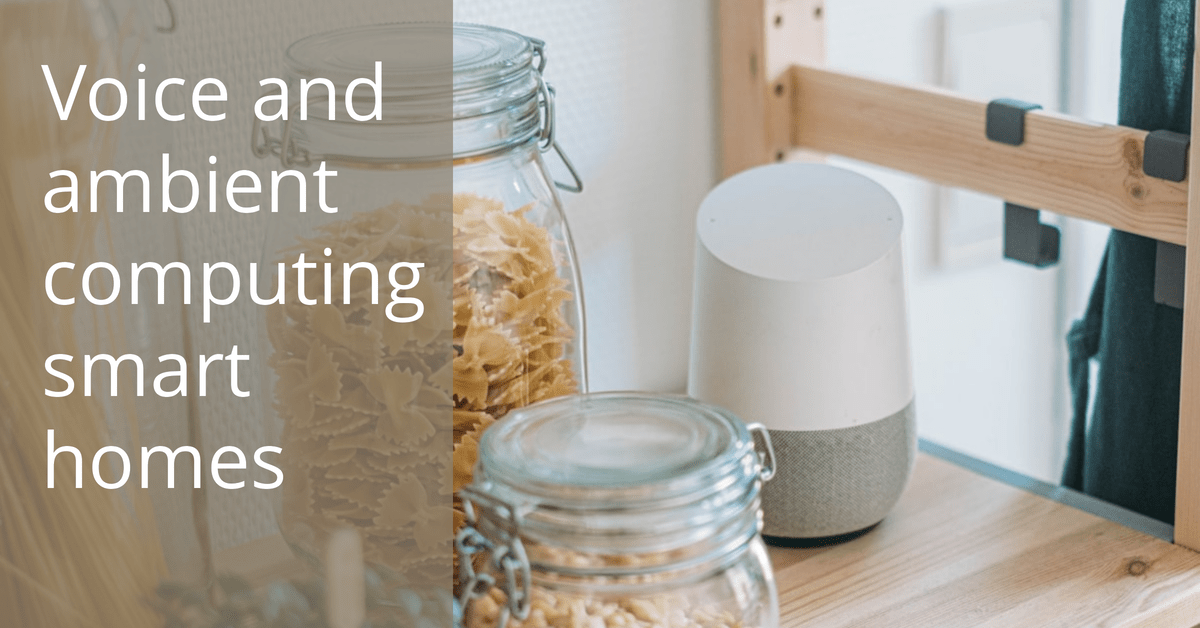Smart Homes. Computing you can’t see or realize they are doing it.
What is ambient computing?
The key difference between “normal” and ambient computing is that you do not need to log in and execute a direct command in a specific device to get something done. Ambient refers to “in your environment”, and these devices integrate so well into your surroundings that you end up not noticing them.
If you compare ambient computing devices with mobile phones, laptops or desktops; you will notice the latter depend on active human input either by typing or touching. The goal of ambient computing is to eliminate friction between you and the device achieving it. For instance, with an ambient smart thermostat, the device judges the room and your interactions with it to adjust the temperature as needed.
Ambient computing uses a variety of technologies, including motion tracking, speech recognition, gestures, wearables, and artificial intelligence to achieve this goal.
Smart speakers and voice assistants
As of 2020, more than a third of US population has a smart speaker / voice assistant. This is the most ubiquitous form of ambient computing devices. Alexa and Google Assistant are not actively activated in the same as the other non-ambient computing devices.
Let’s say you want to eat empanadas, you would directly ask “Hey Google, send me 4mates empanadas menu”; or if you want to turn on the lights, you would ask to do so. What’s more, usually is part of a routine like good morning. Or turning them off included in good night.
There is no future that doesn’t have ambient computing or voice activation.
Mark Cuban, Entrepreneur
Voice and Ambient Computing are the Future of convenience
I see ambient computing getting more and more ubiquitous because people love convenience. For instance, each day when I wake up, I tell my assistant “Good morning”, and runs a routine including time, weather forecast, news. In the future, a room-sensor could detect your presence, first time in the morning and before 7am, and your speakers might kick-off the morning routine.
Other manufacturers are also integrating ambient computing within their product design. For example, Samsung calls it Smart Home and Philips Smart home automation. Google has also been keen to enter the ambient computing space. The company is likely to expand its hardware line to include more devices that further complement its current array of integrated services.




